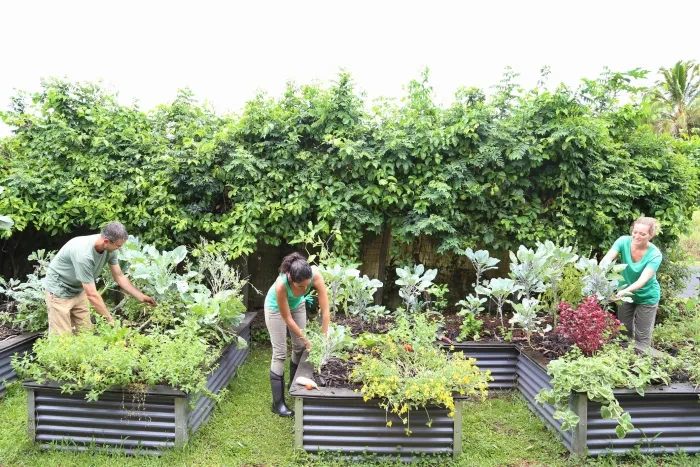The most recent National Gardening Survey says, “More and more consumers are choosing not to dig holes in their leisure times. If they have the finances, they are investing in raised beds.” A raised bed is gardening soil, raised above the normal soil level, and contained by durable materials such as wood timbers, bricks or metal edging.
The most recent National Gardening Survey says, “More and more consumers are choosing not to dig holes in their leisure times. If they have the finances, they are investing in raised beds.” A raised bed is gardening soil, raised above the normal soil level, and contained by durable materials such as wood timbers, bricks or metal edging.
The benefits of gardening in raised beds include being able to start with high-quality soil amended to the needs of your plants, says Clare Matthews in Low-Maintenance Vegetable Gardening (Companion House Books, 2018). Here in southwestern Ohio, where we dig in clay soil, raised beds give us a growing advantage. Other advantages include having smaller areas to water, weed and tend, and the soil in raised beds warms faster than the surrounding ground.

Choose the right location for your raised bed—full sun, good drainage and away from tree roots.You don’t want to build your raised bed in a low-lying spot where water collects, nor do you want a location that’s difficult to get to or that gets a lot of foot traffic from neighbors.
If you’re just starting with new raised beds, start small. It’s tempting to plot out the gigantic garden of our dreams and grow everything we love to eat, but the reality of gardening is that it’s time-consuming and physically demanding.
The first year you may want just one or two beds, a maximum of 4 feet x 8 feet, to tend. Remember that narrow beds allow you to reach across the growing area without having to step inside onto the soil. I made the mistake of creating too wide a bed my first time, at 8 feet across, and then had to rig a plank walkway down the middle of the bed so I didn’t have to step on plants as I tended them. Live and learn!
Once you realize how much time and energy these first beds take, you can decide if you have the bandwidth for more beds in the future.
Patty Craft is content director for Horticulture.